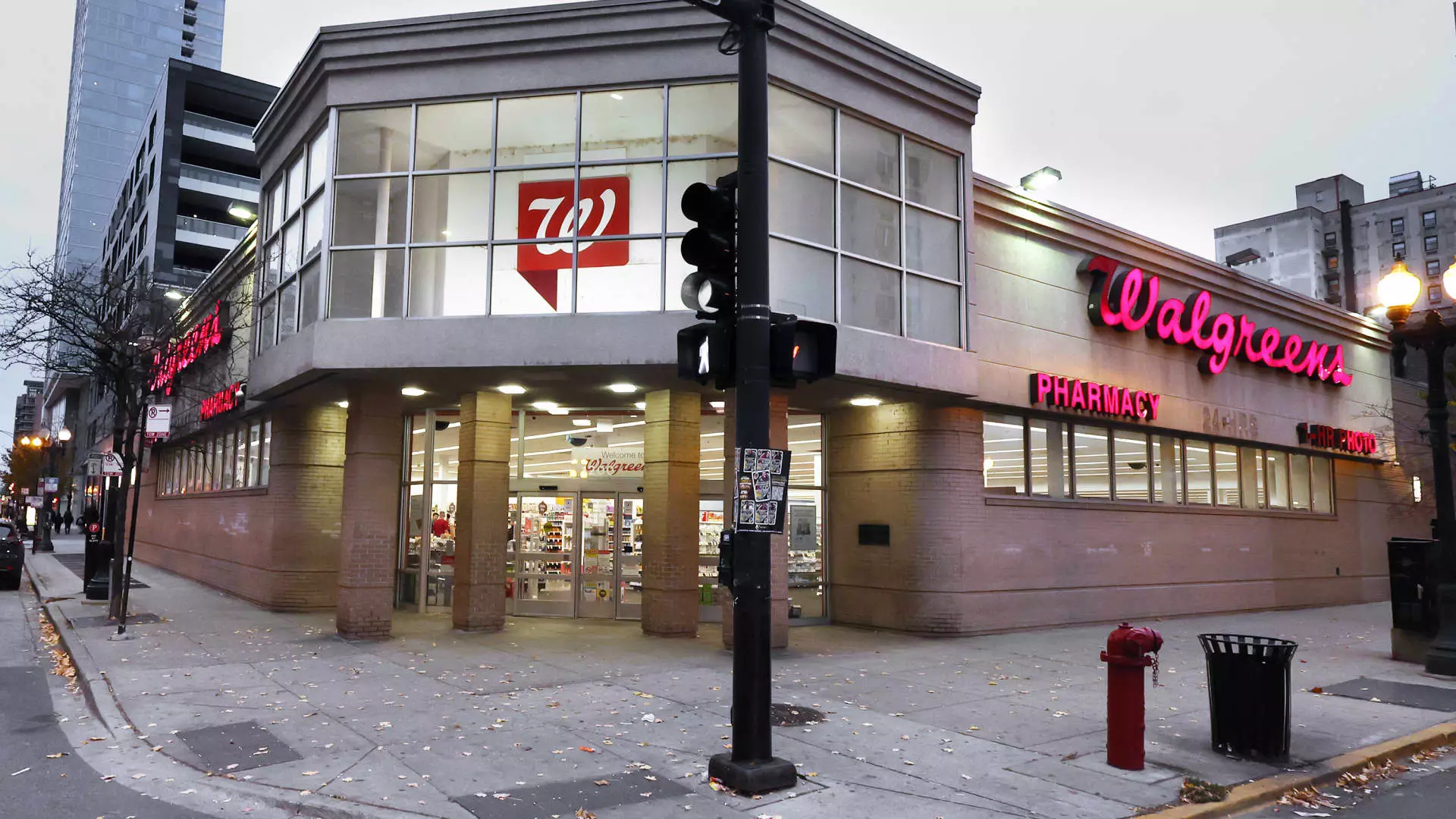In a bold and controversial move befitting a company that has witnessed decades of public scrutiny, Walgreens has reported notable fiscal gains while simultaneously marching towards the privation of its public identity. On Tuesday, the retail behemoth announced its second-quarter results, which, under normal circumstances, might have sparked optimism among investors. However, the palpable tension between performance and impending privatization gives this scenario a significantly different flavor—one that hints at an industry in upheaval rather than a mere financial uptick.
The pending $10 billion acquisition by Sycamore Partners marks the end of Walgreens’ public era, a journey that began back in 1927. It begs a deeper exploration into the ramifications of this transition. While naturally, we might commend any firm for improving cost efficiencies, one cannot overlook the troubling implications that such a move has in a climate where market competition is increasingly led by digital giants like Amazon. These giants capitalize on changing consumer behavior, pushing traditional retailers like Walgreens towards an existential crisis.
Cost-Cutting in Crisis: A Double-Edged Sword
Walgreens’ recent results reflect disciplined cost management, with CEO Tim Wentworth acknowledging that these financial figures only paint part of the picture. Indeed, there’s an unsettling undercurrent to the impressive $38.59 billion in revenue, up 4.1% from last year, which masks significant woes in both its U.S. retail pharmacy and broader healthcare ambitions. While it’s essential to recognize the company’s effort to naively cheerlead its financial performance amidst a backdrop of aggressive cost-cutting, the efficacy of these measures remains questionable.
As Walgreens announces the shuttering of stores and a tightening of expenses, one cannot help but anticipate the human cost behind these decisions. Will these measures produce a solvent entity capable of truly serving its communities effectively, especially when coupled with essential health initiatives that remain rife with complications? Moreover, how will these downsizing tactics affect customer experience in a sector that relies profoundly on trust and accessibility?
The Legal Minefield: A Burden Too Heavy to Bear
While Walgreens portrays a narrative of recovery, the backdrop of costly legal battles underscores the precariousness of its situation. With $969 million earmarked for opioid-related settlements, coupled with litigation against virtual healthcare partner Everly Health Solutions, the firm’s legal burdens are transforming from a hurdle into a significant barrier. Walgreens finds itself not only wrestling with traditional competition but also contending with the repercussions of its past decisions, raising questions of corporate responsibility and accountability.
This ongoing saga highlights an unsettling reality: direct consequences of previous management decisions can sever the lifeblood of a company, leaving it to navigate through turbulent waters. The financial toll of these legal issues, framed against the relatively optimistic sales data, evokes a stark warning—no victory in numbers can erase the company’s culpability in societal health crises.
A Future Under the Microscope: The Implications of Going Private
While the transition to private status might offer some financial relief in the short term, it raises deeper concerns about transparency and accountability. The withdrawal of fiscal guidance amid an opaque restructuring plan is a troubling signpost for investors, consumers, and employees alike. Walgreens is now poised to operate in an inner circle relatively free from public scrutiny, which raises ethical questions about the implications of such autonomy amidst an industry that directly impacts public health.
The narrative of taking the company private amid significant losses creates a paradox that cannot be ignored. It engenders a perception of withdrawal in a landscape that demands unprecedented transparency, especially as Walgreens seeks to redefine its identity in the healthcare sector. There is an aching irony to privatization—companies that seek refuge in the shadows might find their reputations irreparably tarnished.
In its quest for survival against formidable adversaries and a hesitant consumer landscape, Walgreens seems to be at a crossroads, teetering between revitalization and obsolescence. As it grapples with its public identity and continues to face operational uncertainty, one must ask whether it is truly capable of emerging stronger from this seismic shift or merely exchanging one form of vulnerability for another. The metamorphosis of Walgreens serves as a cautionary tale not only for itself but for an industry experiencing a fundamental transformation.

